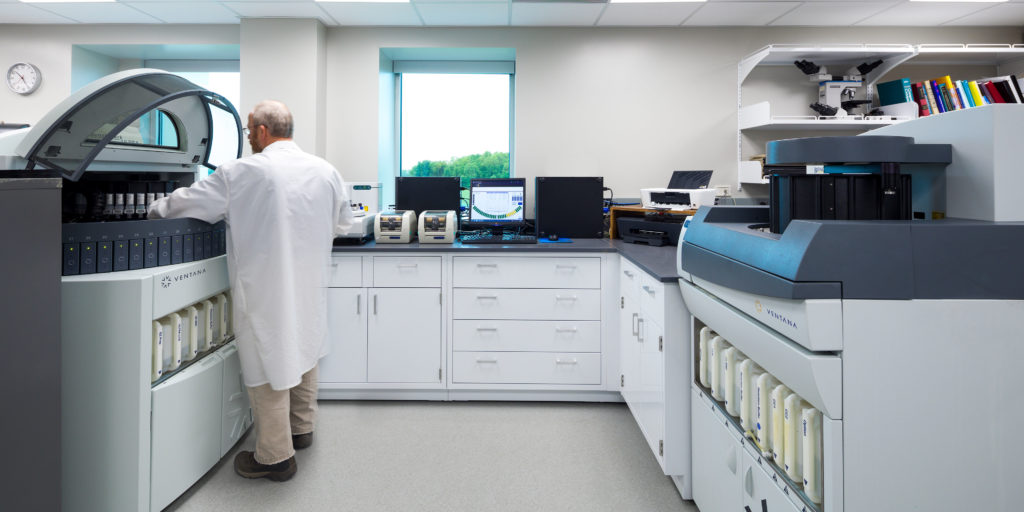
Whether you’re renovating, consolidating, decommissioning, or expanding your laboratory into a brand new space, use a detailed transition plan to ensure a smooth move and protect your projects. After all, the stakes are high– and missteps have the potential to cause more than temporary inconvenience – so be sure to pay close attention to every detail.
The process can be so complex that some labs hire “transition planners.” Using a set of proprietary templates, checklists, and work plans, these professional planners forecast a timeline for the entire transition, day by day, complete with all the decisions and activities that will need to be made. If you’re anticipating a lab relocation, consider whether or not to hire a transition planner in light of the following points:
Expertise.
Believe it or not, some laboratory transitions take up to six months of planning before a single piece of equipment is moved. With that level of detail to consider, even if you feel you have the resources in-house, you may want to hire an experienced professional planner dedicated to this one task only. This will allow your research staff to continue working on their projects virtually uninterrupted, while your transition planner manages the logistics of the upcoming move.
Experience.
It bears repeating because it’s the most critical thing to account for when managing a laboratory relocation: maintaining the integrity of ongoing research is the most important aspect of any transition. This means your transition planner needs to fully understand the environment your lab is moving into. Where will each piece of equipment be located? Is the proper electrical, mechanical, and plumbing infrastructure in place? If you deal in live specimens, what sort of climate and humidity controls need to be implemented?
The following 10 best practices are highly recommended when transitioning your lab:
Choose Your Internal Team.
It’s likely everyone will play a role, but selecting key people to act as team captains will help keep things on the rails. At your first meeting, identify important dates and a project timeline that you can share with the rest of the staff. Set up regular meetings with your core team so everyone stays informed and any emerging issues can be nipped in the bud before they become problems.
Find a Qualified Equipment Mover.
Don’t rely on regular home or business moving companies to handle your sensitive lab equipment. We don’t have to tell you that these items are delicate and easy to damage. Spend the money and hire someone who specializes in moving lab equipment– the extra investment is well worth it.
Monitor Calibration of Instrumentation.
Talk to your vendors/service contractors to determine under what conditions they will calibrate your equipment after your move. Will they recalibrate or re-certify instrumentation after the move, or does your Agreement with them require that they crate, pack, move and uncrate the equipment in order to maintain your indemnification and guarantee?
Determine Cold Storage Needs.
A regular freezer truck probably isn’t going to do it if you are moving items that require cold storage. Any laboratories contain items, samples, or substances that must be kept in cold storage. Factor in the exact temperature ranges and requirements that the items involved in your research require. Have a back-up freezer on hand the day of the move. Dry ice is also a good idea “just in case.” T
Observe the Chain of Custody.
Do you handle evidence for law-enforcement agencies? Pay particular attention to documenting any chain-of-custody considerations during transport.
Special Permits for Hazardous Materials.
Chances are your lab uses items classified by the Department of Transportation (DOT) as hazardous. Make sure you’re adhering to any legal requirements as well as safety concerns while in transit.
Avoid Cross-Contamination.
Your lab’s reputation is on the line. Take every step to ensure that the outcome of your future research is scientifically valid by being accurate and thorough with every item in your lab. Live animals are a special consideration.
Comply with GMP Requirements.
The need to meet regulatory compliance requirements (especially GLP/GMP guidelines) both before and after relocation– is essential. You will need to fill out and file all the appropriate documentation, which can be extensive– so be sure you do your due diligence very early in the lab relocation process.
Plan Your Route.
You may find that doorways and corridors are not large enough to accommodate bulky lab equipment. Measure equipment and consider your route carefully– find alternatives if you have an issue.
Anticipate Your Needs.
Replacing the benches at your new lab? Make sure they look more than look great. If they won’t bear the weight of tabletop equipment, you’ll have big problems on your hands. How about electric outlets and cord lengths? Again, these issues are easy to address in advance, but very inconvenient the day-of.
The most important thing to remember is that laboratory relocation is never routine. The process is complex and the stakes are high. So whether you hire a transition planner, appoint someone from inside your organization, or take the job on yourself, pay careful attention to the details by using these suggested best practices as your guide!


